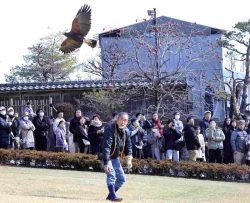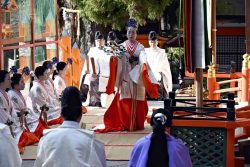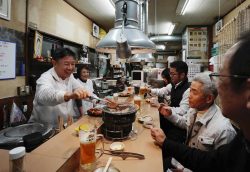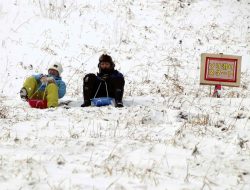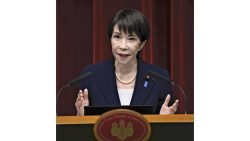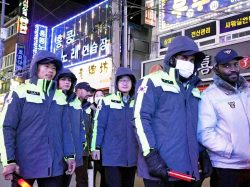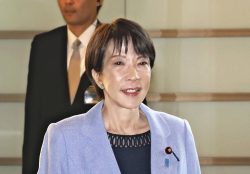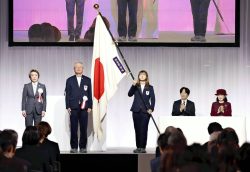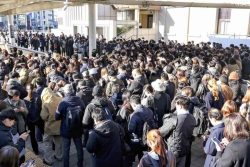
Okubo-dori avenue in Shinjuku Ward, Tokyo, is home to the popular Seoul Ichiba food shop and South Korean restaurants.
16:26 JST, December 1, 2020
“Crash Landing on You” and “Itaewon Class” — just hearing these South Korean TV drama titles causes many Japanese women to swoon. These and other fans of Korean pop culture are a common sight in the Shin-Okubo area of Shinjuku Ward, Tokyo, which is now widely known as a Koreatown.
How and when did Shin-Okubo earn this reputation? I wondered while on a recent stroll around the neighborhood’s main drag of Okubo-dori avenue.
No official view of the origin
“There is no official view of when Shin-Okubo began to be called a Koreatown,” said an official of the Shinjuku Ward government office’s section to promote multicultural coexistence. The section was established in 2012 to disseminate information on every day life in foreign languages after the proportion of foreigners in the ward’s population exceeded 10% in 2008.
Even the section’s official in charge does not seem to have a definite idea of the origin. According to the section, foreign residents accounted for 25% of the total population in the Okubo area as of April 1 this year.
Why do so many foreigners reside in the area? Prof. Emeritus Ichiro Watado of Meisei University, who has been studying Shin-Okubo for about 30 years, said, “The reason is an increase in the number of students coming from South Korea, Taiwan and other Asian countries in the aftermath of the government’s plan put forth in the 1980s to boost the number of foreign students in Japan to 100,000.”
Foreign students started to live in easily accessible Nishi-Shinjuku and Shin-Okubo, where Japanese-language schools proliferated in the latter half of the 1980s. The Kabukicho entertainment district, where many foreign students held part-time jobs, is located nearby, and shops specializing in popular Asian food started popping up in Shin-Okubo.
Soccer World Cup 2002
“The rise in the number of South Korean shops was triggered by the 2002 Soccer World Cup,” said Lee Seung-min, director of Shin-Okubo Language School, who moved to Shin-Okubo and set up a Korean-language school in 2002.
Scenes of Japanese and South Korean people cheering together at Korean restaurants in Shin-Okubo were reported in media day after day, thus attracting public attention.
In 2004, the TV drama “Winter Sonata,” starring Bae Yong-joon, became a megahit, drawing many fans to Shin-Okubo.
Setsuko Ito, 69, owner of the 74-year-old Shimamura seal shop and managing director of the Shin-Okubo shopping street promotion association, grewn up along the Okubo-dori avenue.
“The [Shin-Okubo] shopping street is located in a residential area and there was a ramen noodle shop on the left of my shop and a geta [Japanese wooden footwear] shop two doors to the right,” Ito said as she reflected on the street of the past. “I think it was since about a decade ago that the area came to be called a Koreatown.”
Around that time, the K-pop group TVXQ and actor Jang Keun-suk gained popularity while shops selling TVXQ- and Jang-related goods and Korean cosmetics stores started to increase. It was amid this flood of imported culture that Shin-Okubo is said to have earned its Koreatown identity.
Multinationals coexist
“This is an izakaya pub restaurant operated jointly by a Nepalese and a Japanese. Next to this is a Chinese Wuhan restaurant and there is also a conveyor belt sushi shop,” said Hirokazu Murohashi, 46, a freelance writer who showed me around Shin-Okubo, where he has lived since the end of 2018. “Isn’t it fun?”
As I walked westward from JR Shin-Okubo Station, signs written in Thai and Chinese appeared conspicuously. Entering a small path, there is a Muslim alley lined with halal food shops and stores selling spices. At one food shop, I saw an African bargaining in Japanese with a Bangladeshi shop owner. Nearby, a young Nepalese was working in a Korean restaurant.
In the aftermath of the 2011 Great East Japan Earthquake, fewer Chinese and South Koreans came to Japan while the number of Nepalese and Vietnamese increased, Murohashi told me.
According to Justice Ministry statistics, the number of Chinese and South Koreans who entered Japan in that year dropped sharply, while the comparative number of Vietnamese soared by about 1,500. The number of Vietnamese visitors continued to rise thereafter, with the number jumping to nearly 510,000 last year — about 10 times the figure recorded in 2011. The population of Nepalese and Vietnamese in the ward as of Jan. 1 this year was about 3.5 and about 18 times, respectively, greater than a decade ago, according to the Shinjuku Ward government.
Tilak Malla, who has lived in Shin-Okubo since 2008 and is the editor of a Nepali-language newspaper for Nepalese living in Japan, spoke of the charm of the community, saying, “[Shin-Okubo] is a very livable place because there are many Nepalese restaurants and food stores and it is easily accessible.”
Shigeyuki Yamamoto, 66, representative of the civic group Kyojukon, which has since 1992 researched Shinjuku Ward residents in the Shin-Okubo district, explained the background behind the gathering of foreigners, saying, “Arrangements for their acceptance have been made [in Shin-Okubo area] because it began to accept foreigners about 30 years ago.
“Shin-Okubo has become an international town now where the people from many different countries and cultures coexist.”
Related Tags
"Features" POPULAR ARTICLE
-
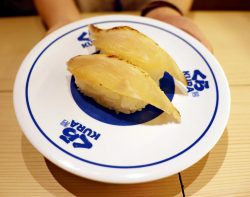
Pangasius Catfish Increasingly Featured on Japanese Restaurant Menus, Home Dining Tables Due to Affordability, Mild Flavor
-
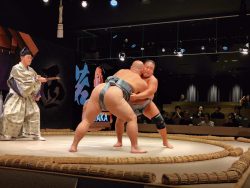
Sumo Restaurant in Tokyo Teaches Foreign Visitors About the Ancient Sport, with Bouts Between Retired Rikishi
-

Autonomous Passenger Ship Connects Mainland with Remote Island in Seto Inland Sea; World’s 1st Commercially Operated Autonomous Vessel
-

Japanese Chef of Italian Restaurant in Tokyo Offers Milanese Risotto; Bright Colors, Rich Flavors in Simple Steps
-

Hokkaido Village Attracts Visitors with Red-crowned Cranes, National Special Natural Monument
JN ACCESS RANKING
-

Japan Govt Adopts Measures to Curb Mega Solar Power Plant Projects Amid Environmental Concerns
-

Core Inflation in Tokyo Slows in December but Stays above BOJ Target
-

Major Japan Firms’ Average Winter Bonus Tops ¥1 Mil.
-

Tokyo Zoo Wolf Believed to Have Used Vegetation Growing on Wall to Climb, Escape; Animal Living Happily after Recapture
-

JAL, ANA Cancel Flights During 3-day Holiday Weekend due to Blizzard


